Showing
matching results.
MyWave, a global leader in Agentic Generative AI (GenAI), engaged Sysdoc to develop and enhance their customers' digital learning experience when beginning their journey of developing ‘Waves’ in the MyWave Innovation Hub.
Sysdoc co-designed and developed a comprehensive digital learning experience to support MyWave’s expanding partner base. This included informative documentation and skill-building online learning courses to ensure consistency, compliance, and scalability.
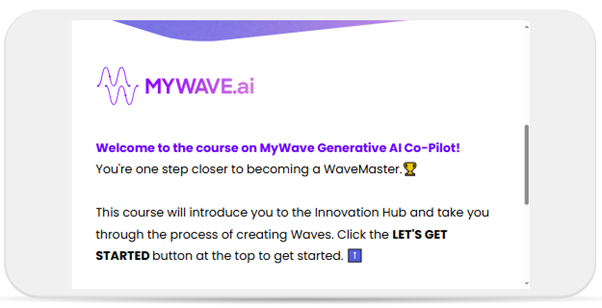
Sysdoc utilised a co-design approach with MyWave to design and develop an effective learning experience.
MyWave’s Business Partners now benefit from a consistent, intuitive onboarding experience that helps them quickly understand how to create and deliver Waves. The digital learning modules and user documentation provide clear, accessible guidance, enabling partners to confidently engage with the Innovation Hub from day one. This has laid the foundation for scalable, high-quality delivery as MyWave’s partner ecosystem continues to grow.
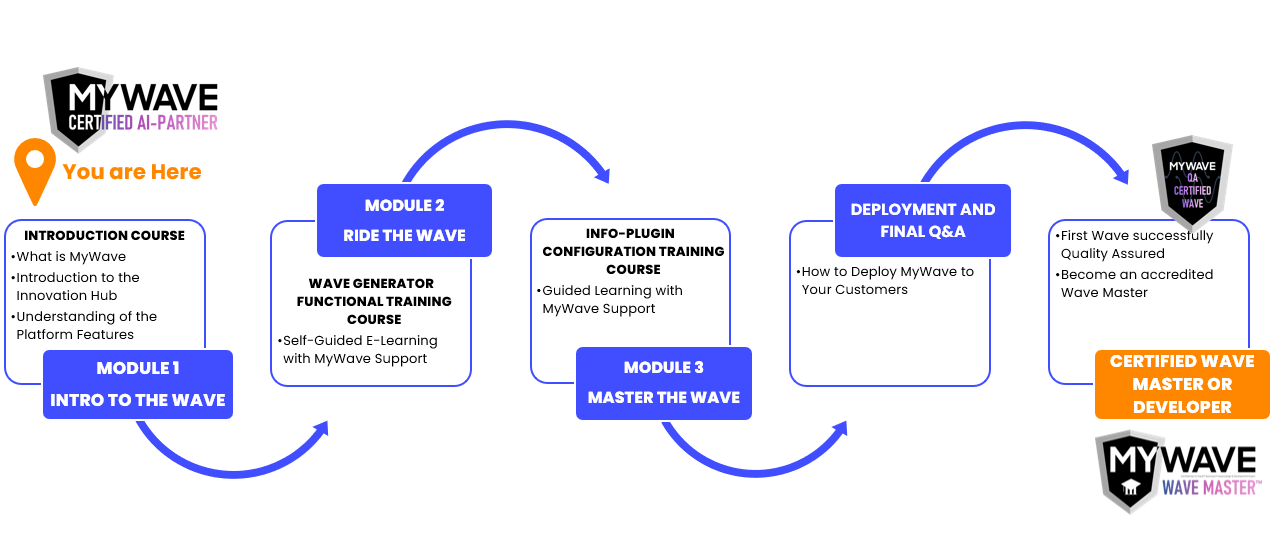

Fletcher Building is one of New Zealand’s most well-known home-building and construction companies. Founded in 1909, Fletcher Building has experienced significant expansion and now employs more than 14,500 people across multiple businesses in New Zealand, Australia, and the South Pacific.
Sysdoc were engaged to support Fletcher Building to migrate to SAP S/4HANA, bringing together multiple businesses within the Fletcher group under one standardised Enterprise Resource Planning (ERP) platform and way of working. The main objectives of D@F were to:
Approach
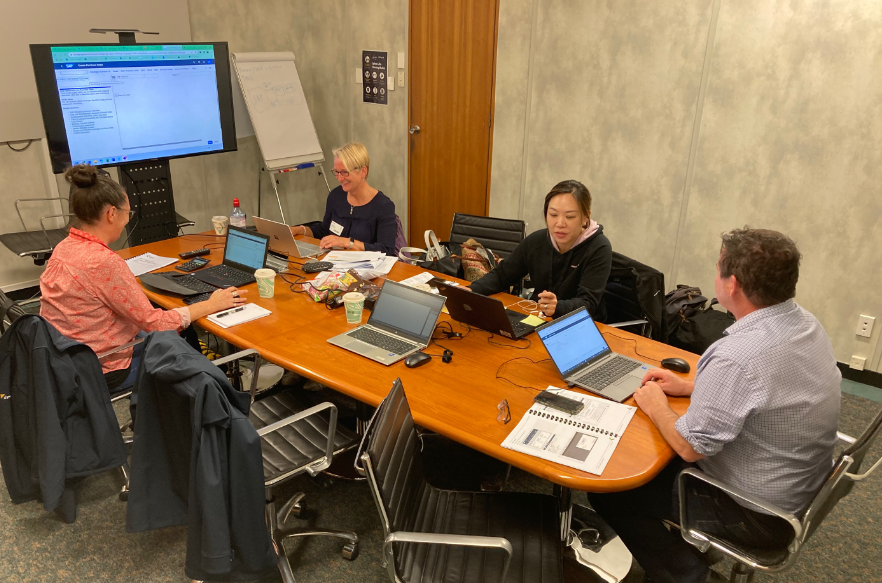
In partnership with PwC, Sysdoc was responsible for providing process design, change management, User Acceptance Testing (UAT), and learning and documentation.
During the programme the following challenges were identfied:
Process Key Deliverables from Sysdoc (our team of process, learning, change and testing experts) working with key stakeholders:
Change Management Key Deliverables from our team:
Testing Key Deliverables to ensure our solution was fit for purpose, we:
Sysdoc presented a detailed Training and Documentation (T&D) strategy that provides a statement of intent along with the guidance to deliver learning and documentation services to the approximately 12,000 impacted learners. The strategy has served to analyse, design, develop, implement and measure learning modules that are proving to be meaningful and impactful. The T&D strategy was designed and presented to the project as a ‘living, breathing’ document, meaning that as the project matures and we learn more, the strategy can be reflected upon and continuously improved. To ensure this happens, each project phase is to review, reflect and update the strategy.
We adapted the traditional Training and Documentation approach to ERP transformation in order to meet the complexity of D@F. This was achieved through:

Our training and documentation project was recognised with a Brandon Hall award in 2023 for Best advance in Creating a Learning Strategy.
Bank of New Zealand (BNZ) was founded in 1861 and has since grown into one of New Zealand's four big banks with over 5,000 employees.
The aim for this project was to successfully migrate and rewrite 3,626 pages of content into a new ServiceNow knowledge portal ensuring information was easy to read and find. The guiding principles of the migration were to ensure:

The Challenge
BNZ’s initial knowledge portal had become outdated and difficult to use. Content was poorly managed and frontline bankers could not find the information they needed to help customers.
The key issues were:
Our Approach
Our team of technical writers at Sysdoc restructured, reformatted, and rewrote pages, applying best practice writing standards to drastically improve readability.
Through employing a user-centric approach, content was reconstructed into straightforward and plain language with valuable information made easily visible, ensuring frontline bankers could find what they needed at pace.
We used information architecture supported by user experience testing to ensure information was where staff expected it to be.
The Outcome
This resulted in a simpler, smarter user experience where quality content was found with ease. Dynamic reporting allowed Sysdoc to track real-time progress, resulting in a project that was delivered within budget. The project benefits were:
Westpac New Zealand is an Australian-owned bank and financial services provider. Westpac Australia is one of Australia's ‘big four’ banks. Westpac in New Zealand is a dominant provider of banking services to small to medium business, corporate and institutional organisations, and is the banker of the New Zealand government. It offers a full-service with around 1.5 million customers nationwide.
Between 2001 and 2004 Sysdoc was engaged by Westpac as their outsource partner on a series of projects to evaluate, conceptualise, prototype and build a knowledge portal called Information Station®. Information Station® is a custom-designed and built site, moving from a manual paper-based business to an online environment. With over 6000 Westpac employees impacted by this change, success was critical.
In 2008, Sysdoc was again engaged as the preferred outsourced partner to support Westpac through a redesign of Information Station®. Westpac initiated a project to provide improvements to Information Station® to meet business requirements in a cost-effective manner.

In 2018, Westpac New Zealand implemented KnowHow®, a new SharePoint-based knowledge base, which Westpac developed in-house. This was intended to replace Information Station®, their legacy IBM Lotus Notes knowledge base in use since 2003.
Westpac’s BAU Knowledge Base Team began migrating content from Information Station® to KnowHow®; however, they had only managed to migrate 10% of the content within the first 12 months. In addition, end-users highlighted issues with searchability and navigation in KnowHow®.
In 2019, Westpac NZ engaged Sysdoc to provide migration expertise, technical writing skills and best-in-class technical development services to support the full migration of knowledge content from Information Station® to KnowHow®.
Sysdoc provided a team of 15 consultants, based in Auckland and Wellington, comprised of Technical Writing specialists, one consultant Information Architect and several SharePoint Development experts to support Westpac in the KnowHow® migration project.
Utilising an owner’s mindset, Sysdoc Technical Writers worked relentlessly with Westpac Subject Matter Experts (SMEs) throughout the oranisation to validate, simplify, and enhance content and migrate it to the KnowHow® portal. Our Information Architect worked closely with Westpac’s BAU KnowHow® Team and end-users throughout Westpac to workshop the best options for navigation of the portal. Our SharePoint Developers worked on the portal itself to optimise search functionality and navigation, and to build bespoke widgets to simplify the presentation of the most complex content.
Sysdoc consultants received excellent feedback. Our Technical Writers worked tirelessly with Westpac’s BAU team on the 5186 pages of content to be reviewed, validated and migrated (or archived if no longer relevant). Staff were provided a user experience of a system that is easy to navigate, with content that is simple to understand and (most importantly) up to date, enabling the portal to become a trusted resource by Westpac staff. The project involved identifying and working with Westpac SMEs to update resources affected by the new Financial Services Legislation Amendment Act 2019 (FSLAA).
Sysdoc has been working with this customer on an organisation-wide transformation programme since 2015.
The programme aims to transform the business by providing 4000+ people with the right tools, processes, systems, skills, and capabilities to deliver service excellence wherever they work.
Following a period of perceived disruptive change across the business, Sysdoc was engaged by the customer to conduct analyses and deliver a programme. The aim was to improve operational efficiency by improving operational processes and developing people capability. The overarching objective of the programme is to assure ship delivery and availability.
A Sysdoc Lean Six Sigma expert led the learning team and further comprised a range of both Sysdoc technical learning consultants and digital learning consultants.
Sysdoc analysed 32 capabilities in 15 business areas to identify the following:
Sysdoc worked closely at all levels, engaging Leadership to understand their key priorities and strategies and conducted workplace observations within the workforce. The results of the analyses were categorised and prioritised using a RAG status:

Our client, a well-known global furniture and homeware retail company, is implementing a SAP ERP system. Their aim is to simplify, standardise, and digitise their finance and procurement operations. This change is being implemented in clusters, with a new group of countries adopting the new ways of working every six months.
Our challenge is to provide a training programme for thousands of employees affected by the change. They need to be equipped with the knowledge and skills needed to competently perform the tasks relevant to their role. We need to provide a best-in-class learning experience, that is fun and innovative. It needs to be scalable and cost-effective. Primarily self-led, the approach must be relevant, role-specific, and suitable for both go-live and business as usual.
Working with the client we held a series of interviews with employees and stakeholders. Through this we established that there is a desire for training in the moment of need and not months beforehand. Experience with a former learning provider had left learners feeling unprepared and struggling at go live. They were looking for a different and innovative approach.

Our approach to the challenge was to offer more than simply classroom training. In fact, we flipped the classroom approach on its head with process and contextual learning up front, using eLearning that is short, innovative, and fun. We then focussed classroom time on giving users hands-on experience in their new system building on the concepts learnt earlier.
And for their moment of need, when they actually came to use the system, we provided a ‘digital coach’. Simple step by step instructions, just a few clicks away, for specific tasks that can be accessed by users as they are completing their system tasks. Complemented by snapshot videos to clearly explain the processes in a high impact but user-friendly format.
An important benefit of using a flipped classroom approach alongside a digital coach is that together they reduce time needed in the classroom. Users are introduced to the process and context at their own pace with self-led eLearning. Their understanding can be built up incrementally and their time in workshops or masterclasses is spent productively in the system practicing what they have learnt. Moreover, they can feel safe in the knowledge that they don’t have to be experts from day one because in their moment of need, they have access to support through the digital coach.
Our client implemented the new system and ways of working to around the globe. This approach is proving to be sustainable and repeatable and is reducing the cost of delivering training on such as scale.
These business transformation programmes include the introduction of SAP S/4 HANA, the deployment of a new Organisation Design, and the replacement of legacy finance systems and delivery of new Project Controls. Taking the SAP S/4 HANA transformation programme as an example, the organisation embarked on an ambitious change programme, implementing SAP S/4 HANA for 3,500 end users, over two phases and six waves.
The objective for the programme was to provide teams with the right tools, processes, systems and data to be able to deliver service excellence and to enable the business to remain leading-edge in a challenging global marketplace. To support this, the programme has implemented the following SAP modules, in addition to integrating SAP Project Systems with Microsoft Project Server and using Microsoft Dynamics for CRM.

Sysdoc brought change management expertise to the programme, with the primary approach focusing on preparing the business for new ways of working; minimising risk, accelerating project benefits and optimising current and future business processes and structures.
A simplified end-to-end business process model was key to the delivery of change and to break down functional silos. Sysdoc worked with the business to draw the processes into a format that which is intuitive and provides role relevant information for an individual, and how it sits in the wider organisation. Once the processes were understood, change impact assessments could be completed to determine the level of change required, and the actions required to ensure business readiness.
Sysdoc hosted an accelerated change event to engage business leaders, which was then delivered throughout the organisation to drive the behavioural and cultural changes required through the project lifecycle and through to business as usual.
We provided a layered communications approach to underpin this activity, including the creation of a vision room for leaders, programme communications and business communications to support the change across several areas.
Our learning innovation specialists designed a bespoke Capability Assessment Tool to enable identification of training needs. We were then able to provide a blended-learning approach involving digital and mobile training options for end users to ensure that the new processes and how to use the new system were understood.
This included Snapshot Videos, eLearning and Instructor-Led training, alongside a Game-Based solution to measure a learner’s competence and confidence in the material covered.
Our User Experience team worked with the business to design a clean and compelling brand for the programme.
The Knowledge Portal was designed and built by the Sysdoc team to provide a single intuitive access point to processes, role-based information as well as training, communications and support materials. This has been used for communications, change and training activities throughout the programme and will be delivered as an information asset to support the business beyond the programme.
Expectations of who would be in charge at an incident could vary substantially based on culture, hierarchy and experiences in previous organisations. For the safety of people and property it is imperative everyone is clear when they are on the spot.
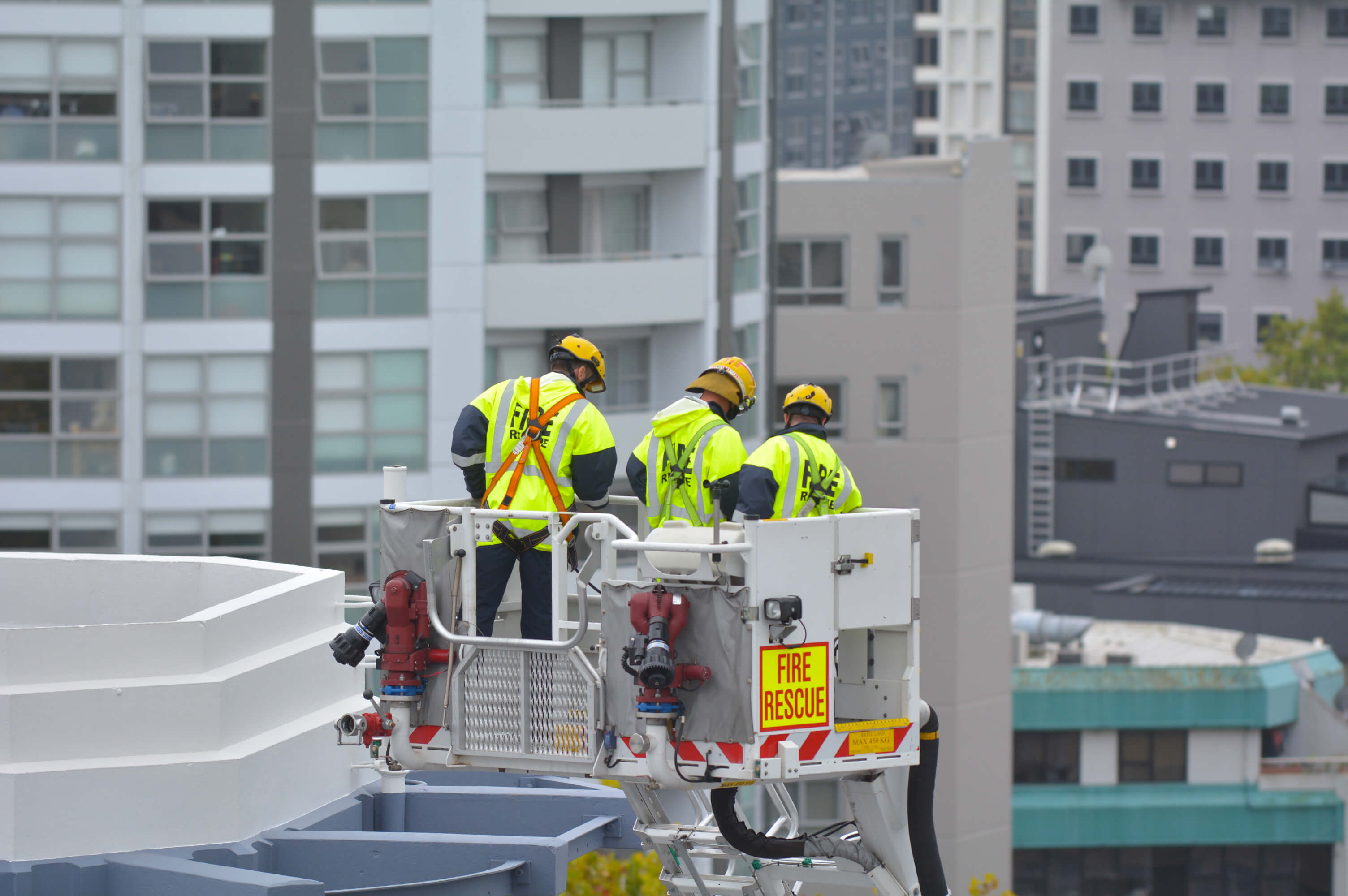
Bringing 40 organisations and 14,000 individuals together is complex. The first phase of the Fire and Emergency transition project did just that on 1 July 2017; bringing urban, rural and volunteer firefighters together into a single organisation, under a new Act, with a broadened mandate. But there is still much more to be done.
The Sysdoc team at Fire and Emergency were working hard to develop policies and procedures for the new organisation to reflect the changes. This included developing a new command and control policy to reflect the substantial change in thinking and approach. Once the policy was agreed, Fire and Emergency needed to clearly convey the messages to firefighters on the front line in a way they could understand and implement without hesitation in high-pressure situations. Fire and Emergency approached Sysdoc to create a solution.
Sysdoc developed an eLearning module to be viewed and discussed in local teams at fire stations. The module includes scripted videos of the most senior rural and urban operational leaders explaining the intent of the policy, supported by whiteboard animations with voiceover stepping through the detail of how the policy works, and discussion questions for the teams to work through together. It was important for everyone to see senior leaders giving clear and strong support to the new policy and ways of working, and to ensure all the details were portrayed accurately (down to the smallest details in the animations showing the correct coloured helmets and the trouser cuffs untucked).
The module was released to operational staff in March 2018, and distributed through the Fire and Emergency Learning Management System, or on USB sticks (in places where internet connections are still a bit dodgy). The module is building an understanding of command and control expectations, whilst also supporting the desired new culture amongst staff.
Westpac New Zealand is an Australian-owned bank and financial services provider. Westpac Australia is one of Australia's ‘big four’ banks and is Australia's first and oldest banking institution. Westpac in New Zealand is a dominant provider of banking services to small to medium business, corporate and institutional organisations, and is the banker of the New Zealand government. It offers a full-service with around 1.5 million customers, 3,000 shareholders and 197 branches nationwide.
Between 2001 and 2004 Sysdoc was engaged by Westpac as the outsource partner on a series of projects to evaluate, conceptualise, prototype and build a knowledge portal called Information Station®. Information Station® is a custom-designed and built site, moving from a manual paper-based business to enabling an online environment. With over 6,000 Westpac employees impacted by this change, success was critical.
In 2008, Sysdoc were again engaged as the preferred outsourced partner to support Westpac through the Information Station® redesign. Westpac initiated a project to provide improvements to Information Station® to meet business requirements in a cost-effective manner.

The programme faced significant challenges:
Sysdoc consultants flexed in and out to deliver:
A Global Engineering organisation wanted to enhance their overall Graduate Programme, looking to increase applicants and retain their top talent. Sysdoc applied a Human-centred approach to the project, placing emphasis on empathising with different user groups to gain insights and opportunities for improvement.
As a leading manufacturer, employing thousands globally, it’s essential the organisation attract and retain the best talent within the Engineering sector. Having invested in a new apprentice training facility, aiming to help nurture the unique skills required to deliver one of the most globally complex engineering challenges, it was essential the Programme reflected the investment.

Sysdoc was asked to evaluate their graduate programme and advise on ways to improve their overall offering to meet the organisations application and retention targets.
Adopting a human-centred approach, we ran persona identification workshops to confirm the key user groups. Following this activity, we conducted a series of stakeholder interviews to empathise with Graduates starting, midway and post completion of the programme. The insights derived from the initial interviews enabled us to create a range of personas to understand their keys needs, motivations, frustrations and behaviours. These helped us to foster empathy for the different user groups, which were played back to the organisation to ensure they were at the heart of all future decisions surrounding the overall graduate experience.
Upon completion of Personas, we utilised Customer Journey Maps to define each step in the Graduate Programme experience, associating all tasks and activities with each point. Through another round of interviews, we were able to map thoughts and emotions from our different personas to each phase. These helped to generate a series of insights and opportunities, flagging two areas that required the most attention.
This process was played back to the organisation in the form of a User Insight Report and supporting Customer Journey Maps. These enabled the organisation to make informed decisions based on actual user insights and feedback, reducing unnecessary spend and targeted investment.
Our client is a privately-owned company providing specialised data services globally to organisations with complex supply chains. The company was seeking to bring a large number of regional businesses into a globally integrated organisation, each focusing on the requirements of one business sector, and putting the customer first.
Organisations are increasingly finding that they must restructure their procurement and supply chain functions, and further departments including sales, customer service and operations to reflect external changes including globalisation.
The changes however have to ensure that the customer continues to be top of mind. So businesses are seeking a holistic approach to OD change.
Putting the customer first is at the heart of everything we do. Therefore, when our client approached us to undertake organisational design work to ensure they were living and breathing being a customer-led organisation, we were happy to help.
The process we took was extremely collaborative, with heavy engagement with the owners of the functions being redesigned, the strategy director who had developed the overall business strategy, HR to plan and support implementation and Finance to develop the business case and integrate the plans with the budget.
We used a tool – OrgVue – to analyse the existing organisation structure, and then to inform a detailed target organisation structure for the future. Alongside this, we also completed a large amount of work which would support the changes to the organisational design.
From modelling activity volumes to determine optimal resource levels, to the development of a job family framework with career paths, our work ensured that this redesign delivered to the individuals too – both inside and outside the organisation – as an example of holistic change.
The benefits are already being felt, with roles in the new structure having far clearer accountabilities, with more strategy and a clear career path. Operating costs are reduced, and the board expressed confidence that the changes will result in a stronger, more profitable business, with stronger revenue streams and improved net promoter scores.
Sysdoc worked in partnership with a major global manufacturing business, which was undergoing a significant transformation due to changes in market needs and their commitment to global sustainability requirements.
They were looking to downsize one sector of their business, whilst investing significantly in key growth areas.
Without effective and timely transformation, the organisation would not have remained competitive and would have lost market share in their emerging sectors.
With no consolidated view of the portfolio impacts, Sysdoc identified 22 large scale transformation initiatives across the impacted sector.
The result of this piece of work provided visibility of the impacts across the organisation against the planned timescales. This was the first initiative of this kind to have taken place within our client.
The results of the analysis, using Sysdoc’s Insight Change Platform showed there were significant change ‘hotspots’ over a 12-month period. Some business functions and sectors were being heavily impacted throughout the year.
For example, it was highlighted that in one month, manufacturing was impacted by 25 large scale changes. This presented a risk to output levels. Had this not been realised, the organisation would have suffered a significant loss in revenue and the potential inability to meet customer requirements. The long term-damage would have been a cost to reputation and future business.
Other sites around the global were identified as having a high level of impacts at key points in time. Following Sysdoc’s analysis, it was possible to work with those sites, ensuring that the resources required to support the initiatives had been made available. Thus enhancing the chance of success, and mitigating the risk of change fatigue.
Due to the increased visibility of upcoming requirements, business resources were stood up to address the change hotspots. Thus, increasing the chance of success, and the achievement of organisational outcomes.
The data provided by the Insight product allowed our client to focus their efforts on transformation initiatives aligned directly to their strategy and organisational vision.
Te Kahu is an Oracle cloud-based system that was launched at Accident Compensation Corporation (ACC) in early 2022 to replace some of their HR and Finance systems and to introduce a new system for Procurement. The launch of Te Kahu impacted both the teams as well as the stakeholders within ACC.
Our role was to support the internal learning development team and provide resources for the successful implementation of Te Kahu. This included providing a Training Lead resource who would take over from the outgoing Training Lead. Some of the challenges we faced along the way, included:

Despite the challenges, we were able to develop workable solutions and leverage our internal Sysdoc expertise to create the required eLearning modules, training and simulation videos, and recorded webinars, in record time and with minimum disruption to the stakeholders.
This was made possible through open discussions and capable stakeholder management, which were key to ensuring sufficient buy-in especially when it came to the new direction and requirements. We were able to solicit the necessary help and direct approvals from the subject matter experts (SMEs), which otherwise may have compromised the timeliness and/or quality of the final deliverables.
The learning material Sysdoc developed was engaging and helped the users adapt to the new deployment by minimising dependency on SME face-to-face training. Ensuring availability of just-in-time learning materials that focused on real-world actions and providing the means for managers to ensure reporting requirements, team compliance, and onboarding with little external input was a successful outcome.
In response to a 2016 drinking water contamination, parliament passed the Water Services Entities Act in 2022 to set out the creation of new water services bodies to oversee water services. A core part of the Act is the perspective of the indigenous Māori population. For Māori, water is intertwined with spirituality, tradition, and well-being. Central to this perspective is the concept of Te Mana o te Wai, translating roughly to The Authority of the Water.
The Department of Internal Affairs engaged us at Sysdoc to look for a ‘golden standard’ solution to educate and inform the existing workforce on the importance of Te Mana o te Wai in their everyday roles and demonstrate the value of the indigenous perspective.
We met the challenges by developing a highly interactive eLearning that was tailored to our client’s needs. We focused on relevance to the audience and embedding the storytelling nature of indigenous culture.
The eLearning took the learner on the journey of water as it travels from the sky, down the mountainside, to the sea with high quality visuals from the graphic design team and a native Māori speaker was hired to read the voiceover and provide pronunciation for key words.
By embodying all these elements, we were able to successfully capture the indigenous voice in its complexity and create something that genuinely speaks to Māori communities and Te Mana o Te Wai.
We have had a long-standing relationship with New Zealand’s largest company, Fonterra for over 20 years.
At the beginning of 2020, Fonterra was replacing the existing demand planning system and we were engaged by their Integrated Business Planning (IBP) team to provide change management, training, and documentation services for their SAP IBP implementation project.
Users of the current demand planning system were very proficient in their existing system, so it was essential we ensure their confidence in the new Cloud-based solution. The project began in early March 2020 and immediately faced challenges due to the impact of the global pandemic COVID19.

To ensure the project remained on track, we worked collaboratively with the IBP team to deliver a successful and sustainable change. Our solution included:
Because of the challenges of the pandemic, both the existing demand planning system and SAP IBP were maintained in parallel over a nine-month period. This ensured the IBP team had business confidence in the new demand models and forecast simulations.
The implementation of SAP IBP has had a significant impact on the efficacy of Fonterra’s integrated business planning and the sustainability of their supply chain.
This project won SAP Best Run Award in Digital Supply Chain category...a tremendous finish to an incredible journey navigated through challenging covid times. See our SAP S/4HANA page for more about our experience supporting SAP S/4HANA implementations.
Xero is a global small-business platform that supports 3.5 million subscribers with a core accounting solution, payroll and expenses, as well as workforce and project management. The brand prides itself on its award-winning customer support and highly skilled CX specialists, with teams based in New Zealand, Australia, the US and the UK.
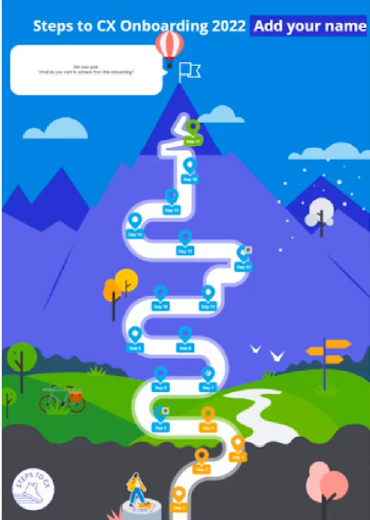
Training and onboarding for CX specialists didn’t match the demands of the role. Delivery was inconsistent across the global network, learning modules were largely knowledge-based without addressing the skill components needed, and training scenarios were dated and irrelevant to the role. As a result, onboarding a new CX specialist required significant administration, set-up time and support from leadership.
In collaboration with Xero, we were tasked with redeveloping the onboarding program and changing the way it’s delivered. The new ‘Steps to CX’ onboarding program would provide foundational learning for all CX specialists starting in their roles.
Before development began, we worked with Xero to create a list of critical factors and pain points that set out key expectations for the program.
From the outset, our goal was to produce a scalable, world-leading, innovative and meaningful onboarding program with a strong return on investment. Using targeted design thinking sessions, collaboration and a focused evaluation phase, this goal was achieved.

The project was awarded a Silver Brandon Hall Award for Excellence in Learning – Best New Hire Onboarding Program.
Fonterra engaged Sysdoc on Āwhina to re-implement ServiceNow using out-of-the-box functionality. Having heavily customised the previous ServiceNow system Fonterra was limited in its ability to adopt new functionality and innovation.
Fonterra’s vision for the Āwhina project was to:

The Challenges
Some of the challenges we faced were:
Approach
Sysdoc helped Fonterra staff to adopt ServiceNow rapidly, and also set up Fonterra to simplify processes involving ServiceNow by:
The Outcome
The Fonterra Āwhina project delivered a user-friendly portal with optimised processes, that encouraged self-help behaviour among end-users. Sysdoc’s pragmatic change and training approach ensured a seamless transition.
Manatu Mo Te Taiao - Ministry for the Environment (MfE) works with partners to accelerate change and improve environmental outcomes for both the economy and society. MfE is the public service department of New Zealand charged with advising the government on policies and issues affecting the environment and relevant environmental laws and standards.
As part of MfE’s Policy Implementation & Delivery (PID) Division’s Continuous Improvement programme, a need was highlighted for improved business process documentation used by fund teams across eight (8) funding programmes. Also highlighted was the need for reengineering of current processes.

Our work enabled current documentation to be more comprehensive, better aligned with the work undertaken by the investment teams, and to support consistent processes across PID wherever relevant. To achieve this, we drafted eight end-to-end process maps to capture the unique processes being used by the different fund teams to manage funds. We also revised existing standard operating procedures (SOPs) to support these and included sections not previously documented.
Further, the reengineering work helped streamline processes, improve efficiency, reduce risks, and pave the way for a robust/optimal process that focussed on fund recipients and a high trust approach.
In addition to this, we undertook exploratory work to identify ‘quick wins’, i.e. business process improvements that could be easily implementable. We also identified ideas for future efficiencies.
Several challenges presented themselves during the project, including:
We overcame the hurdles through open dialogue, solid teamwork, and good relationships with the stakeholders. We were able to bridge the gaps and gain sufficient understanding to deliver what we promised. These included:
Our documentation work produced the following benefits:
Furthermore, our reengineering and exploratory work gave rise to the streamlining of processes, ideas for process improvements, visibility of risks involved and a draft optimal fund process that would be controlled yet robust enough to handle varying levels of recipient confidence and risk tolerance.
Communicating new funding processes was a challenge for the Tertiary Education Commission (TEC) project team, who required buy-in from staff and sign-off from key stakeholders before they could move to the next stage of system development.
The TEC allocates over $3 billion a year in tertiary education funding. It's a big job, particularly as the process of allocating and tracking tertiary funding needs to work efficiently for over 700 different tertiary education organisations across a variety of funds.
When it came time to explain how the new system and processes would work, there was a lot to explain and the project team knew staff would not want to wade through pages and pages of requirements and diagrams. Plus, reviewing the documentation certainly wouldn't create enthusiasm for the changes to come.
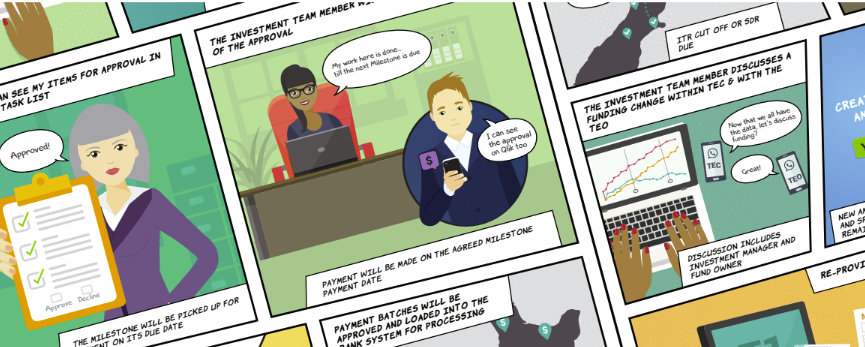
The Sysdoc Change Manager suggested an innovative visual storytelling technique and worked with the Sysdoc Digital team to deliver a compelling story, resulting in speedy sign-off.
Our Sysdoc Digital team worked alongside a Sysdoc Change Manager to create a cartoon strip to show how the system was designed to work. A meeting room was turned into a 'model office' - wallpapered with a large-scale version of the cartoon story and a proof-of-concept version of the proposed system. By walking staff through the stories, the project team was able to verify what would work, at the same time as building confidence in the proposed systems and processes.
The comics were very well received. Staff could identify themselves in the process, and the sign-off process was fast and smooth. The project team could move on to the development stage with confidence.
As a leading multinational dairy company owned by 13,000 New Zealand dairy farmers, Fonterra is the world's largest exporter of dairy products and employs more than 16,000 staff worldwide.
Fonterra was keen to improve their onboarding of new staff and they asked us to create new materials that would be long-lasting, but not boring.
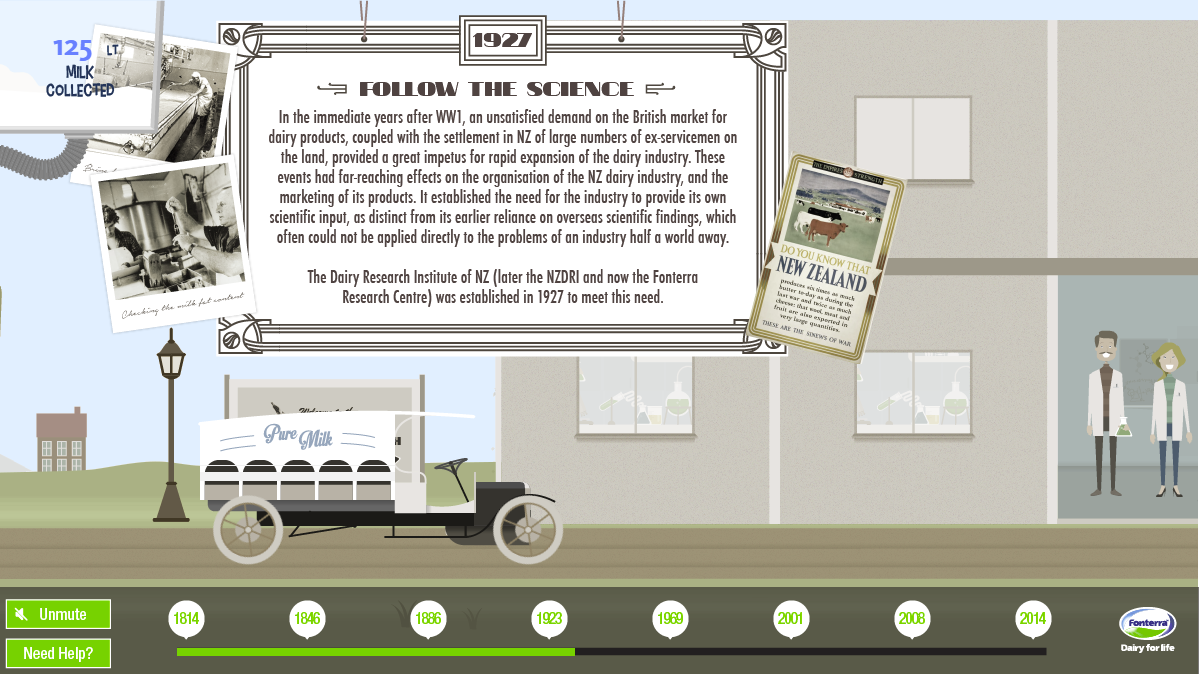
Our team suggested using an eLearning approach to give a rich and engaging result.
The module takes learners on a journey of how Fonterra was founded and allows them to experience its unique history. Our design and development team used a range of cutting-edge instructional design approaches including gamification. The game format engages learners at strategic points and challenges and rewards knowledge and decision making, offering a rich learner experience.
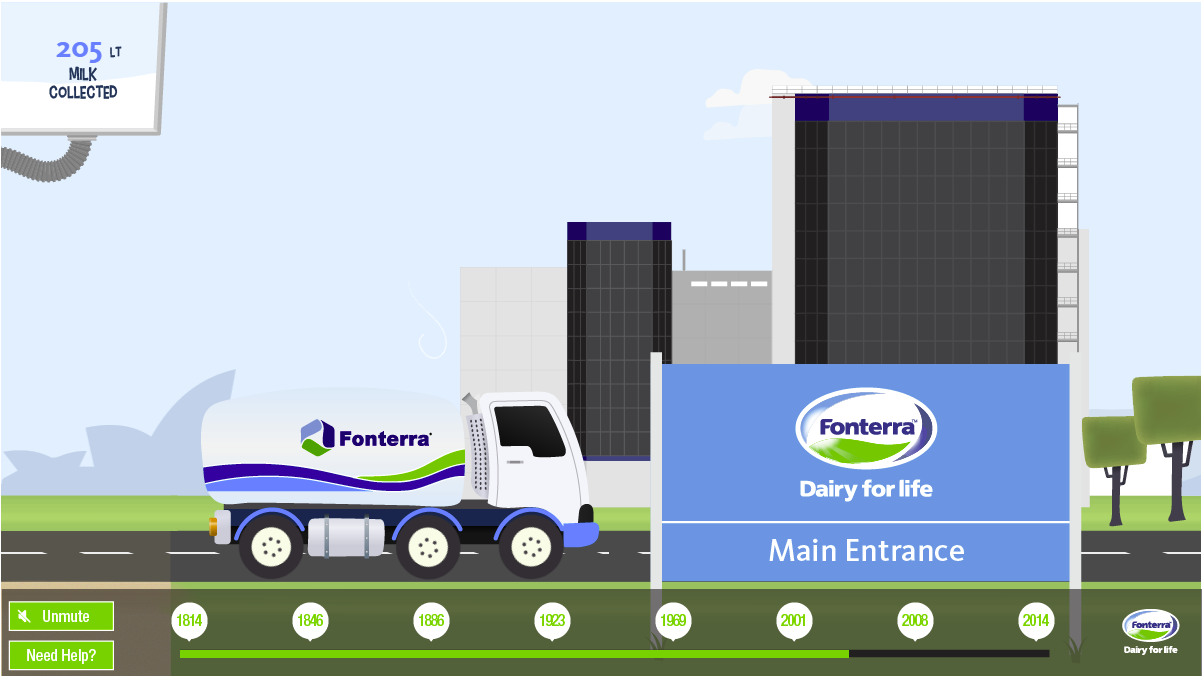
Custom graphics were animated to create format, making this a look that is unique to Fonterra. The interactive format uses live action video, photos, narrations, stylised graphics, and a time period themed background.

A refinery faced a triple challenge: to achieve cost savings and improve productivity, to minimise knowledge loss resulting from voluntary redundancies among a specialist and experienced workforce, and at all times maintain the highest standards of safe operation. A previous realignment had failed to reach its objectives and had seriously compromised safety. The refinery was noncompetitive, and no longer rated a strategic asset.
In the oil and gas industry, safety is paramount for the running of the refineries and rigs through which fuel extraction takes place. Those who work in the sector appreciate the role that robust process plays in ensuring the health and safety of all those operating on site.
The value of an end-to-end approach cannot be underestimated, yet organisations in the sector are seeking opportunities to harness the power of new technologies to ensure this is done in the clearest, most understandable way.
Sysdoc was appointed to support the reorganisation, and identify areas for improvement and eventual cost reduction.
We defined and captured all refinery business processes, role profiles, guiding policy and legislation, structures and systems in an end-to-end online Knowledge Portal. This provided a model of how the refinery worked and how to manage the safe transition to a new way of working in the future.
This highly visual, accurate end-to-end view of the organisation provided one trusted source of information that enabled the programme to over-deliver against the expectations and provided management with the information they needed to make critical decisions in the refinery environment.
The result of our work was the fastest return to base business (safe working practices) in the company’s history. It raised our client's competitive position from one of the worst to one of the best-performing refineries; and from a non-strategic to a strategic and profitable asset.
This was the fastest refinery within the organisation to implement Sarbanes Oxley financial controls because of the excellent process documentation already in place. The Global Audit Team heralded it as an example of best practice in the oil refining industry.

The Carbon Trust commissioned a strategic report which identified that 30% of the long-term UK targets for carbon reduction in the Aggregates sector could be realised via behavioural and process change.
The programme was funded by an Aggregates Levy Sustainability Fund (ALSF), and as the first of its kind, it required buy-in from multiple stakeholders and sponsors, both from the Carbon Trust and the five major Aggregates organisations which we drove proactively from the word go.
The programme was launched via workshops at quarry level, designed to build awareness and excitement for the programme. Change champions were identified at every site to work with their colleagues to identify, measure and deliver carbon-saving initiatives.
Deploying Sysdoc's innovative approach to delivering change, we designed a blended programme including workshops, 'toolbox talks', posters, videos, quick reference cards and a Carbon Saving calculator. Change was adopted in waves to create a slow shift in behaviour - making what was once acceptable, unacceptable.
We also did a lot of 'myth-busting' and showed the financial benefits that some of the incremental and seemingly small changes could make. The numbers spoke for themselves and contributed to the programme being awarded a coveted international green award.
The creation of an intranet would see an end to multiple legacy systems and processes, and instead re-invigorate teams with a “one-stop shop” for work resources. Its implementation succeeded in reducing both unnecessary content and the time required to get to the information they wanted when they needed it.
ABP was aware that transformation was required to ensure that their teams could function and grow in a digital workplace. A key part of this was the creation of iPort, a bespoke intranet.
Given the scale of ABP in the UK, and the number of documents and processes needed to be summarised within the system, the project was just as much a digital experience project as it was a business transformation – including the introduction of greater governance and controls.

The User Experience and Design team worked closely with key stakeholders in ABP from across the organisation. As a result, iPort spoke to the three main aims of this work – to bring consistency, efficiency and greater governance to the working environment at ports up and down the country.
iPort was developed in SharePoint Online with the user at the top of mind. The result is a highly personalised, and visually appealing portal. The user experience is enhanced with a more streamlined path to information. Teams now obtain the content they need in fewer than three clicks, and a reduction in duplicate material means they access this same content with more speed and ease.
Ultimately, the platform is driving the future of work. Greater numbers access iPort through mobile devices, removing the need for a fixed workplace, and its development allows for future tweaks so that the solution moves with the rapidly changing digital environment, unlike the legacy systems it replaced.
The leadership programme we developed for our UK defence client ensured that each leader was aligned with the objectives of a major forthcoming transformation programme and was a public advocate for major digital cultural change required across the business. Another essential goal was to ensure each Director took full responsibility for landing future change in their business unit; changes to processes, people, data and systems.
For our client, it was essential that they were building in capability through leaders who inspire, motivate, support and advance their teams. As such, they engaged Sysdoc to develop a leadership development strategy across a senior stakeholder group.
Key aspects of our work with the leadership team were developing a programme from the ground up; and a series of monthly facilitated workshops to align to the vision of the business.
Areas, where leaders did not align, were identified and addressed prior to a communications cascade throughout the business, where various key messages were shared across a series of channels.
Following this, a programme of coaching and training was delivered – from one-to-one sessions to more in-depth coaching events with the whole leadership team.
The whole process was mapped against a scorecard which embedded ownership for change with the leaders themselves, and which was reported monthly.
As a result of the leadership programme, the client is benefiting from the next generation of leaders who are aligned with the vision of the business, promoting cultural change, with a strong focus on digital transformation. They are now fully accountable for the processes, people, data and systems within their role, but most importantly they are champions of advancing the business through more effective, empowered and enlightened leadership.
The Workforce Management programme was company-wide in its scope and would establish that good practice is not a one-off exercise, nor technology a substitute, but an enabler of new ways of working.
Multiple work streams were redesigned through collaboration with the entire team and underpinned by a blended learning approach to maximise benefit.
The shared services sector combines multiple different roles for a variety of clients across the globe. The industry has seen expansion following recent economic uncertainty which saw both public and private-based consumers reduce their reliance on these providers.
The time is ripe for those within shared services to take advantage of a leap towards new technologies, which will enhance how they work and drive benefits in an ever more digital-centric environment.
Such was the scope of the change ahead, that work started by developing an end-to-end Target Operating Model (TOM). It was completed to represent the strategy for management of the entire UK workforce and delved into the systems and information flow which existed between all parts of the business.
This holistic view was essential and informed a series of workshops. The workshops were developed with the aim of embedding new ways of working through understanding their current processes and looking to their future processes. We asked, “What should the change look like?”
Faced with the challenge of embedding this change, policy and procedure standards were documented across the organisation. To enable working in a simpler, smarter way, these are now part of the organisation’s Performance Management Framework for all contracts.
A blended learning approach was taken, using scenario-based training and utilising a series of “Day in the life of” examples to train and upskill all stakeholders from the pilot groups onwards.
The programme has delivered significant value across the business. In the last 12 months, the new ways of working have achieved approximately 3.5% of annual payroll savings, which stands to increase to 15%. Across the organisation, teams are benefiting from better visibility of their workloads through forecasts, and better utilisation through improved management of staff working time.
At the UK’s largest automotive manufacturer, high importance is placed on people and their career development, prizing skills such as creativity and innovation as well as core expertise. As the organisation has grown and new technologies have emerged, it has become necessary to transform some of the traditional roles to allow skilled employees to focus on value-add rather than purely transactional level activities. This will enable individuals to progress their careers and make a difference, whilst ensuring that the organisation is getting the most from its talented teams.
Sysdoc worked with our client to deliver a project to improve the organisational structure across Global Purchasing, impacting 2,000 employees globally. There has been a significant spike in the levels of interest around the new career roles, where it is anticipated that attraction and retention will be a key benefit. The programme has also seen an increasing number of women placed into managerial roles (an increase of 21%) – an important step for an industry which considers gender equality a key target.

This was a positive programme of change and Sysdoc was tasked with driving engagement globally. A new future-focused operating model was designed. One global purchasing team was created through a cost-neutral Target Operating Model. Team members were then given the opportunity to express a preference for the roles this new model offered, which were allocated through a series of workshops, based on their preference, skills and competencies.
From the outset, a clear and comprehensive change management strategy was planned, including change, communications and training to deliver a smooth transition for their people. Bringing the new roles to life was essential to the success of the programme, which included developing personas, delivering ‘Day in the Life of’ engagement activities as well as offsite events and mood walls.
Regular drumbeat communications with the teams were vital throughout the lead up to the restructure as well as during the deployment phase. Surveys were issued regularly to enable a consistent, accurate and timely view of the satisfaction of individuals, and to provide them with relevant support if necessary. A forum was established to provide peer-to-peer support and act as a sounding board for ideas, which created a direct channel for those impacted by the transformation.
This was followed by a highly integrated training programme designing and delivering role-based training across the whole organisation that was tailored to the individual needs of the functions.
The impact of the programme has been seen globally. Work was delivered across the UK, Brazil, China, India and Slovakia and set to continue after go-live, embedding the knowledge delivered from 243 training sessions. These covered a total of 49 courses and 2,500+ training instances taking place.
Sysdoc created an award-winning blended learning programme which was delivered over a 12-month period. The programme covers nine in-depth topics and uses a wide range of delivery techniques to create a series of challenging experiences for participants.
As a leading multinational dairy company owned by 13,000 New Zealand dairy farmers, Fonterra is the world's largest exporter of dairy products and employs more than 16,000 staff worldwide. Fonterra relies on smart, commercially savvy staff, but not everyone has a comprehensive understanding of the key drivers of Fonterra’s business, or how value is created across the many parts of the business.
Sysdoc was asked to develop a programme to build the commercial acumen of selected staff within the Fonterra business – a mix of accountants, planners, analysts, managers and graduates.

Sysdoc developed a series of nine modules to help staff explore a range of complex topics, including the economics of the dairy industry, how decisions are made within the dairy value chain, milk quality impacts on value, trade-offs in manufacturing decisions, and strategy development skills.
Each module uses a variety of delivery methods to get its point across and give participants a relevant experience. Delivery methods included games, field trips, custom video and story content, live-action role play, simulated websites, and group challenges.
Participants were asked to demonstrate their new skills and knowledge in a range of ways including Dragon’s Den scenarios, group work, games, team challenges, and written submissions.
The programme succeeded in delivering a comprehensive and challenging experience for the Fonterra staff involved. The modules delivered a lot of content in a convenient and economical way.
Our client is currently implementing a learning platform as part of their journey to improve ownership, process, data, management and accessibility of Learning across their organisation.
Whilst the initial focus is on compliance training and assurance, there is a wider goal of developing learning cultures and driving continuous professional development. Our Human-centred Design capability worked collaboratively with our Digital Learning Hub and their team to facilitate the education processes for their new platform.
To ensure our training was tailored to the respective audiences, our first step was to conduct a research phase. This helped our teams to gain valuable insights into the goals, motivations and frustrations of our users.
During this phase, we conducted multiple interviews with the identified target audiences, focusing on six key areas, talking to Managers and the wider employee audience. Throughout the interview process, we utilised the ‘5 Why’ technique, discussing device accessibility, whilst building a better view of our audience’s mental models.
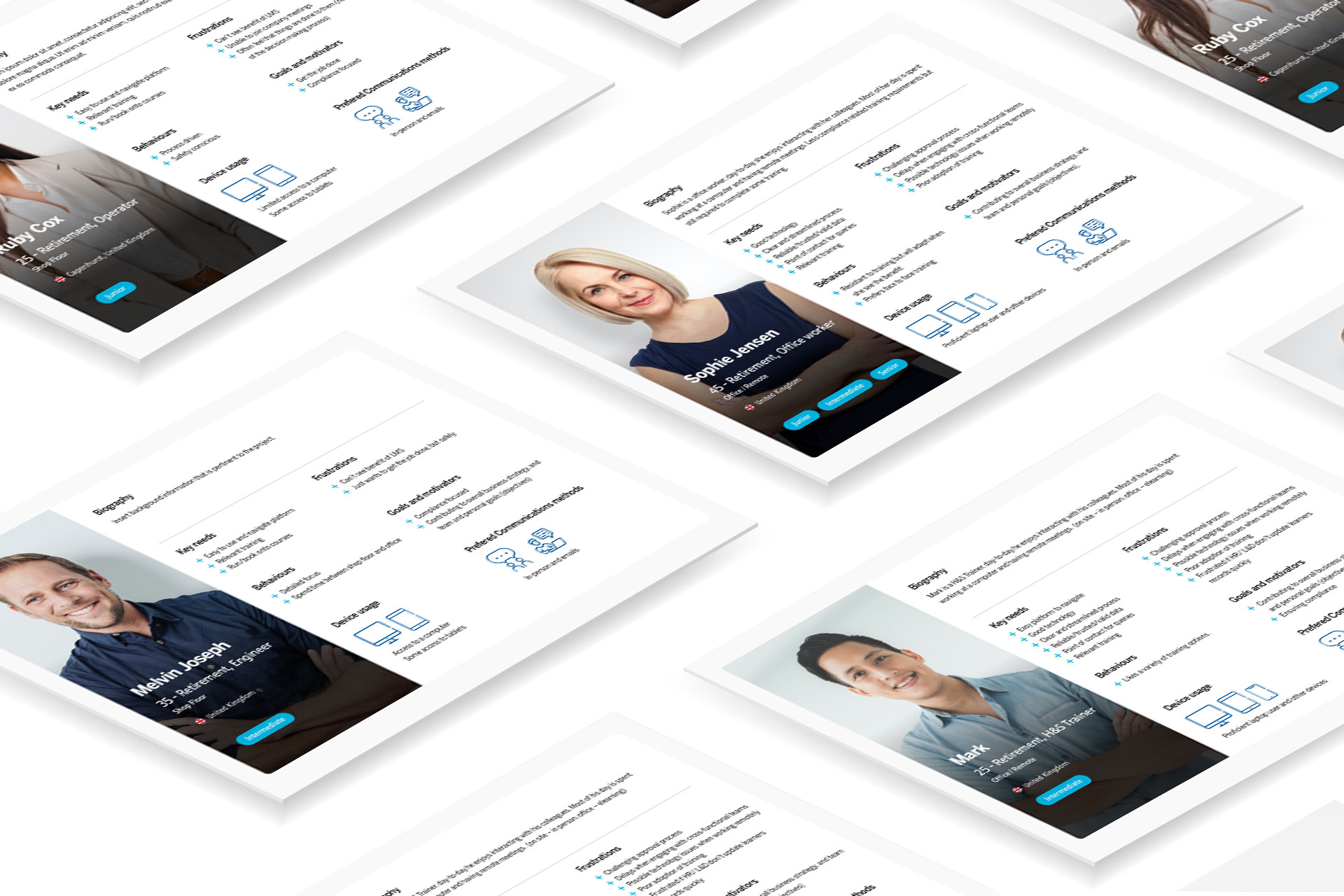
Following the interviews, we updated our Training Needs Analysis allowing us to fully understand previous training experiences to enable us to develop a learning programme that would engage all users across the organisation.
Based on the interview findings and research, we translated our outcomes into comprehensive Persona cards. These personas act as fictional characters to represent the different mental models of the audiences that will interact with the new platform.
To bring the personas to life, we created a set of digital characters that reflected the same characteristics, to be used throughout a series of animated videos. The aim of the characters was to promote recognisability and familiarity of the different personas, enabling users to identify themselves when digesting the information presented in video format.
The characters were also used as part of our eLearning content, which was supported by visual representations of the new platform. This will enable a seamless guide for users to follow when learning the functionality of the new system, ensuring they have the relevant support available when needed.
Causeway's mission statement is to support young people in overcoming barriers to accessing higher education, apprenticeships, and early careers.
They design and deliver programmes to ensure that applicants from less privileged backgrounds get the support they need to produce outstanding applications to Higher Education. Bridging that gap is crucial to the trajectory of a young person’s career path. They provide expert support giving teachers the skills and resources they need to ensure all their students can navigate HE applications effectively. The also provide transformational outreach - helping universities, charities, and corporations develop initiatives that inspire and equip participants to take their next steps.
Causeway realised that their online presence did not effectively attract the proper engagement from their target audience and, as such, enlisted our help. Given our new way of working, having visibility and connectivity online is essential to the sustainability of a business and the breadth of people it can reach. The requirements from Causeway were:
Approach
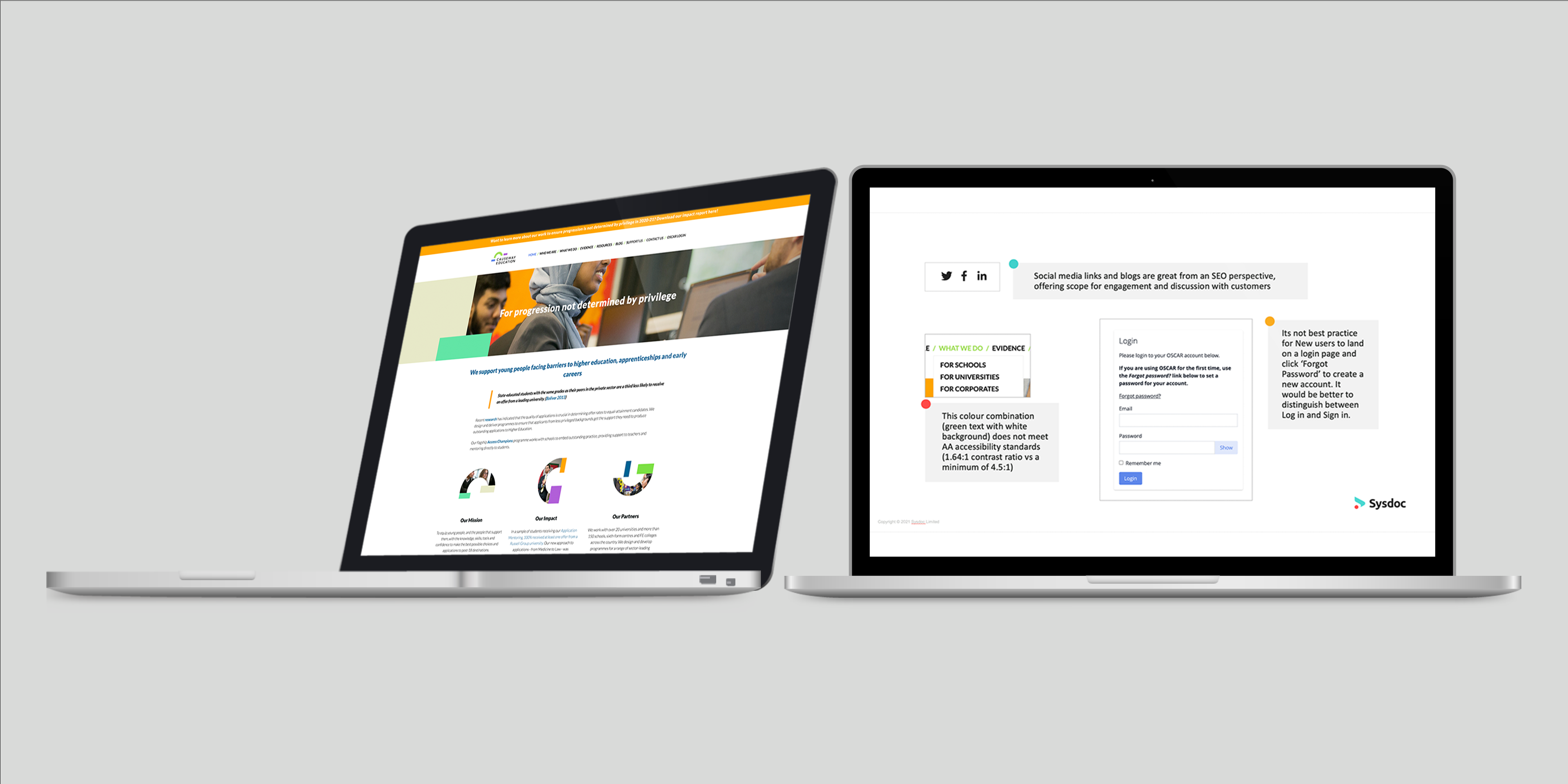
The human-centred design team in Sysdoc adopted a robust methodology to review the user experience of their website. The methods and approach incorporated three main frameworks for analysis, underpinned by the following actions (simpler, smarter):
Outcomes
Working with Causeway incorporated specialists within Sysdoc from the People & Culture team, alongside the Human-centred design consultants. There is no sustainable way to implement new designs and outlooks without evaluating how your people will join the journey with you to act as true advocates for your organisation
This project, aligned with Auckland DHB’s Together value, enabled time savings through automated approval paths and personalised pre-populated data against user logins. It also supported Auckland DHB’s strategic themes of consistent evidence, informed decision making, intelligence, insight and emphasis on operational and financial stability.
The existing paper-based HR forms were printed out and physically moved between signatories until the form was complete. On final approval, it would be filed away amongst the 25,000 paper-based employee files stored at Auckland DHB.
The risks of the existing system included:

The Outcome
The project realised the following benefits:
Our client is dedicated to anticipating future needs and delivering an exceptional insurance experience that customers rave about. By rapidly adopting the latest technology and continuously refining their claims process, they ensure an extraordinary customer journey that stands out in the industry.
Partnering with us to integrate Agentic AI into their claims process will revolutionise the customer experience, making it simpler, smarter, and more efficient. Our innovative proof of concept (POC) promised a seamless, customer-centric experience with unmatched speed and efficiency, ensuring claims are processed and paid out faster than ever before.
Our goal was to showcase how an AI Co-worker could automate and resolve issues in their claims process, eliminating backlogs and lengthy processing times. By reducing claim processing time, enhancing accuracy and quality, and cutting costs and waste, we aimed to streamline the entire process. The POC was divided into two phases:
Phase One: Demonstrate how an AI Co-worker can automate, accelerate, and improve the claims process using sample data. This resulted in a rapid POC without needing connection to customer systems and data.
Phase Two: Building on the Phase One POC, connect to the client’s systems and data to demonstrate integration with their technology environment.
The key objectives included:

Working closely with the client, we developed a project brief outlining the timeframe and prioritised list of current issues within their claims process to be addressed.
Within a very tight timeframe, Sysdoc successfully demonstrated that Agentic AI met the client’s success criteria. This was achieved by creating an easy-to-use branded interface that guided the Claims Manager through the claims process in line with the client’s business process and policies.
The user interface was intuitively designed, allowing users to enter questions or prompts in a conversational format or select predetermined prompts to obtain the necessary information. The client was impressed with the interface's look, feel, and user experience, expressing interest and excitement about its possibilities.
The dashboard displayed the prioritised claims, making it easy for the user to select the card they wished to review. These cards were clear and concise, and provided a next action option.

The presentation showcased Sysdoc's technical capability with Agentic AI and generated genuine enthusiasm among the client's team for what is possible with AI Co-workers. The benefits of integrating Agentic AI to reshape their claims process, along with potential applications in other business areas, sparked significant interest and excitement. The process was quick and efficient, delivering outstanding results within budget and time constraints.
Sysdoc partnered with the New Zealand Army (NZA) to revolutionise their training methods and enhance soldiers’ technical proficiency. This initiative marked NZA’s first steps towards adopting a distributed learning model, central to which is the transformation of the P99 Doctrine.
The NZA traditionally relied on face-to-face training, with instructors facilitating knowledge transfer and referencing the NZA Doctrine. However, as part of its strategic plan, the NZA recognised the value of embracing change and exploring innovative training approaches. This presented an opportunity to modernise training methods and enhance proficiency.

Sysdoc commenced the NZA Learning Aids project in 2021, collaborating closely with NZA teams. Initially we were tasked to develop a series of 16 weapon system learning aids to support the Technology Enhanced Learning initiative. Over time, the scope expanded to include learning aids for combat theory, offensive operations, urban operations, simulation, training, and instruction. This expansion continued through to 2024, resulting in the development of over 50 learning aids.
Sysdoc worked closely with NZA, engaging extensively with soldiers to understand their learning needs, which enabled rapid prototyping and exploration of best practices. We converted the sixteen manuals into accessible, user-friendly online learning aids for each weapon system. This transformation made the content available on-demand to all NZA soldiers and provided significant support for instructors.
The content was rewritten in plain English to enhance comprehension and searchability. We identified and developed content enhancements through collaboration with NZA stakeholders to clarify complex tasks, reinforce safety and add value for soldiers. These enhancements included videos, photography, animations and graphic development, which brought training materials to life and enabled soldiers to visualise and mimic best practices.
Applying key design principles, Sysdoc deliverables of learning aids included eLearning modules with video capture, photography, graphics and animation. Each had a standardised content structure, easy accessbility and user-freindly aids to support soldiers' technical proficiency.
A tiered approach was implemented to develop each training aid. Each tier involved robust quality assurance, approval and sign-off processes
Easy access to these learning aids has empowered soldiers with accurate information and enhanced technical proficiency, which received positive feedback and widespread adoption. Detailed and interactive content has helped soldiers understand and apply complex technical information in practical scenarios, which is crucial for maintaining high safety standards.
Soldiers are exposed to the library's resources through formal training initiatives, returning on average four additional times for non-directed use. Positive feedback from both soldiers and leadership highlighted the project’s success and lasting impact.
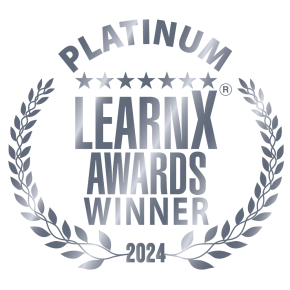
Our client, a State Government with full control over public finances, administration, health, education, social care and policing, was mid programme in a move to introduce a full ERP solution based on S/4HANA, SucessFactors and Ariba.
Sysdoc worked as part of a consortium of suppliers supporting a large and complex public body implementing SAP4/HANA, Success Factors, and Ariba across all its areas of operation. We led work on Operating Model, Organisation Design, Process and Procedures, Training, Communication, Culture and Way of Working and Change Management.
%20(1).png)
The importance of building trusted relationships was quickly established by using structured enquiry couched in a genuine desire to understand the underlying challenges. Our small team developed a fuller understanding of the actual and perceived value of a multi-service model and used this to test both the business case and arguments for and against, both practical and political. The outcome was a way forward that all concerned could buy into and was firmly anchored in realisable benefits.
Within the scope of work for TOM/OD were two key priorities:
As well as providing assurance around the various functional models and support the implementation of required changes, we were also able to properly assess the business case for a full ‘multi-service’ shared service and convince the customer to change its route to this model to better manage risk and deliver the right strategic outcome.
The move to a full Shared Service model is complex and from early discussions it became clear that whilst the case was understood at a logical level, there were concerns about readiness for such a move and genuine questions around the benefits when balanced with the level of disruption involved.
From our wider engagement with the client, we shared these concerns and were able to consider them in the context of our experience of supporting clients through this type of transition and with the benefit of our own personal scars from when things haven’t gone to plan.
For our client, the way is clear to move forward on the priority of getting new processes and systems in place, whilst moving the model forward at a safer and more effective pace.
Successful organisations realise that maintaining correct business processes fundamentally underpins the ability to operate at an optimal level, reducing waste. The organisation must however ensure that their customer continues to be at the forefront of their vision. Organisations are seeking a holistic approach to continuous improvement.
Our client is a global defence company that delivers a wide range of defence, aerospace, and security solutions. They had recently completed a large-scale ERP implementation which impacted a large proportion of processes and business operations.
Our Customer First principles are at the core of everything we do internally and externally and at the heart of our client’s aspirations. The client approached us to facilitate a series of process design workshops to map their business processes end to end. The graphical representation of this work ensured that multiple stakeholder groups had a full understanding and could articulate how their business operates to their customer at a high level.
This work built on the team’s efforts in reviewing 'as-is' processes to ensure accuracy and to re-engineer processes where necessary to reflect how they operate today.

The approach we took was extremely collaborative, with heavy engagement from department heads, business solution leads and SMEs. The background work consisted of analysing their current business processes, which were held in Solution Manager (SAP), and comparing and reconciling business processes which were held on a business management system. From working closely with the business, it became apparent that in some areas processes were not being adhered to. For maximum consumption of the mapping a graphical one-pager was designed, which allowed the client to easily visualise their end-to-end business processes.
A graphical visualisation clearly highlights process triggers, the integration between all the areas and how our client’s customer is integral to the success of operations. Alongside the graphic, the team provided an insightful report detailing the findings and key points the business should consider to continuously improve and reduce waste and variation.
The benefit and utilisation of the maps and report has been recognised by the client and has allowed further activities to take place, such as data mapping, proof of concept and validation of processes. In addition, this has led to continuous improvements in projects being initiated.
Deploying an experiential learning programme supported by robust change management, we successfully enabled the organisation to move from legacy processes and management systems to a single, mobile, digital solution which standardised global processes and captured key business information.
Our client’s engineers are located globally, spending much of their time travelling to visit and work with suppliers. The manual legacy process they were accustomed to was not scalable to support a supply chain that had grown in both complexity and globalisation. There were numerous workarounds, multiple spreadsheets and widespread non-compliance adding to the challenge.
A programme was put in place to deliver a streamlined global process, supported by an integrated mobile solution to enable new ways of working and ensure adherence to process. This represented a significant change for this globally dispersed group of engineers. The mobile solution would provide:
We worked closely with the business and developed an integrated enablement programme to engage the engineers in the case for change and the key benefits; and to educate them in the process and mobile solution.
There were three aspects we focused on: cultural and behavioural change, process change and mobile working. We designed a programme that delivered an immersive learning experience to reflect the change that was to come. There was no PowerPoint and no sitting in classrooms. A model office was created with realistic business scenarios; this allowed engineers to learn ‘on their feet’ as they navigated the office with their mobile devices and could discuss and explore learning scenarios with their colleagues. This also enabled other aspects such as Health and Safety with mobile devices to be addressed.
A rigorous approach to change management and communications ensured business readiness criteria was understood and measured. The learning programme was delivered across the UK, China, Brazil, India and Slovakia by a combined Sysdoc and client team.
Engineers who were accustomed to a more traditional format of PowerPoint led presentation/lecture style training were immediately engaged with the programme the moment they entered the learning environment. The very learning experience was modern and fresh, reflecting the change that was being introduced. The visual impact of the room ensured that their mindset was changed - the format of the training was like nothing they had seen before, reflecting the change needed to modernise their ways of working.
Engineers responded positively to being active during the learning programme by engaging in constructive discussions and debates around scenarios and processes, bringing everyone from out behind their desks and encouraging equal participation and collaborative learning amongst the groups.
By creating a collaborative environment for learning, we achieved the goal of creating an immersive and effective learning environment whereby the engineers were able to share their own on-the-job experiences and enhance the learning experience for all attendees. The results spoke for themselves, which you can see in our headline statistics. This learning approach ensured that the digital transformation programme achieved a successful adoption and recognised the benefits of the investment quickly by enabling the capabilities required of their Engineers.
Engagement scores were dramatically improved compared to other learning programmes the Engineers have experienced.
This learning approach ensured that the digital transformation programme achieved a successful adoption and recognised the benefits of the investment quickly by enabling the capabilities required of their Engineers.
We have had a long-standing relationship with New Zealand’s largest company, Fonterra for over 20 years.
Each year thousands of service contractors and Fonterra employees must complete site access inductions for each site they visit. Previously, these inductions varied from site to site and were delivered inconsistently. They were often face-to-face, recorded manually, and challenging to track.
Through in-depth collaboration with Fonterra, we developed online induction modules for 32 Fonterra sites. These micro-modules have standardised and streamlined the induction training, resulting in shorter, more engaging learning that captures site-specific critical Health and Safety information to keep everyone safe.
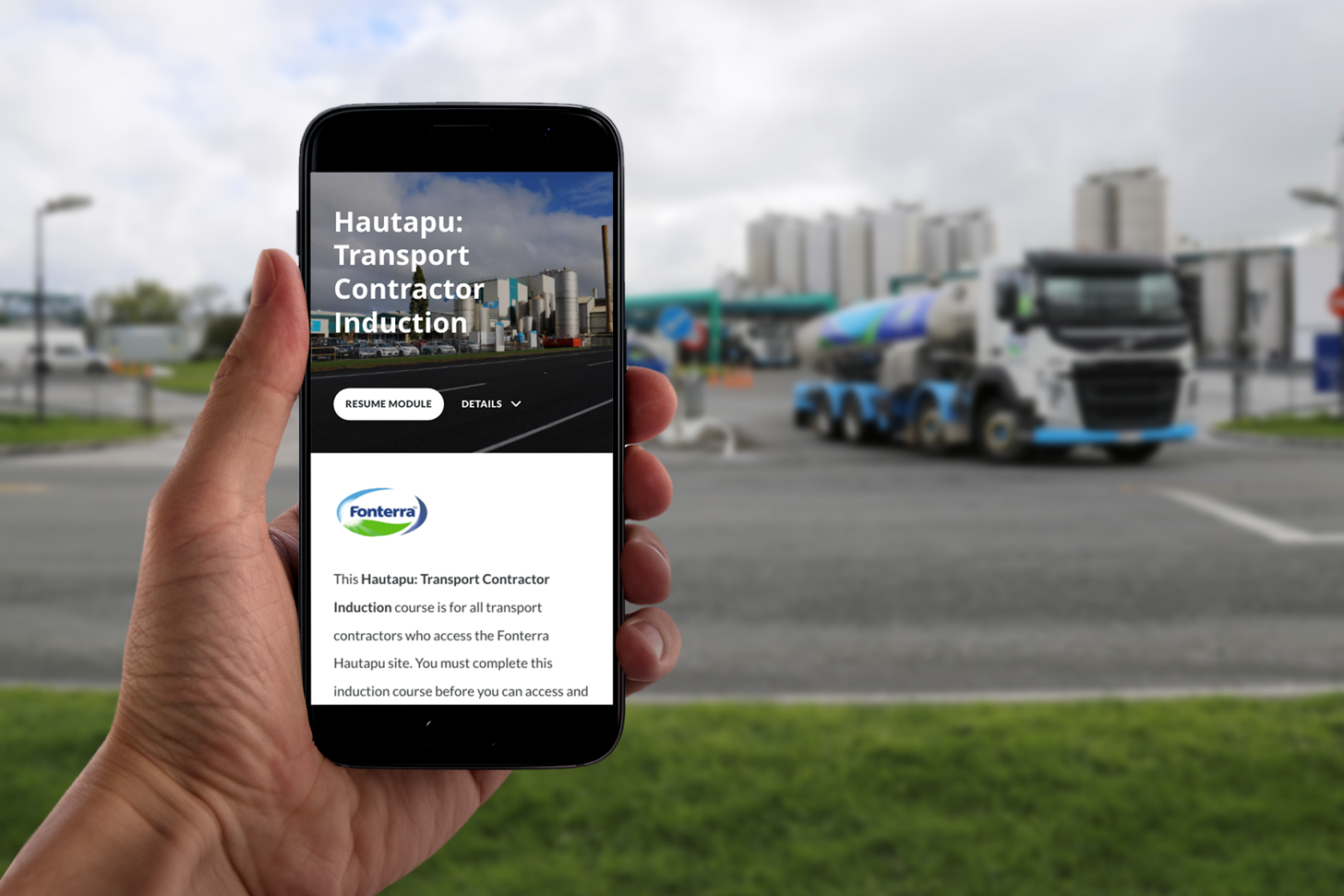
Being digital, the modules can be updated easily when site procedures or regulations change. It’s much easier to track completions as they are stored and viewed in Fonterra’s Learning Management System. As the modules can be completed virtually from anywhere before visitors come on-site, they save valuable time for contractors and Fonterra employees, and are a huge cost saving for Fonterra.
Sysdoc enhanced Fonterra's strict site-specific training program by developing the easy-to-use Transport Contractor Induction Mobile Learning modules. These enable the drivers to log in and complete their induction anywhere, before arriving on site.
Sysdoc received the following awards for these online induction eLearning modules:
Our client is one of the most prestigious banks in the world. Following an audit recommendation, the Bank had recently started work to map and improve processes in its finance function. Initially, as part of this work, a small number of staff had been trained in process improvement and Lean 6-Sigma techniques, but they had not applied these skills to a live project. These staff were given the role of Process Champions.
The Bank was aware that there were several inefficiencies in its finance processes. There was a culture of duplication of effort and rework. Many of the processes are initiated in other departments, such as procurement and HR.
There were inconsistencies in how these departments worked meaning that the finance team were left to obtain missing information before processing items; for example, the amount of detail on purchase orders generated internally was often insufficient to pay invoices received from external parties. Additionally, checks on work were duplicated and there was no proper workflow in place. The duplicated checks were sometimes made against different source documents as departments did not have access to the same records. An example of this was how the Bank identified items of expenditure that would subsequently be capitalised. The project teams had access to more detailed information and made the initial decision. A finance Business Partner then confirmed the decision by reference to the original business case. The finance team then made additional checks to verify that the cost item was categorised correctly.

A series of three workshops were held with the Process Champions and subject matter experts to:
The Bank now has a prioritised action plan identifying process improvements ranked by benefit and cost of implementation.
Fonterra invests over$1 billion annually in projects and R&D to support their long-term ambitions. However, prior to adopting Planview, many of their processes for managing and implementing changes relied on outdated, manual, and unintegrated systems. To achieve their strategic goals and optimise resource utilisation, Fonterra needed a unified portfolio and project management platform.
The project was named Ari (meaning 'to be clear, visible or evident'), and Fonterra set out to adopt Planview's new Portfolio Planview Management (PPM) tool, with the aim of providing Fonterra with enterprise-wide visibility and transparency over the project portfolio, providing a sustainable, timely, and user-friendly way to plan and monitor activities, ensuring high-quality outcomes.
Sysdoc was engaged to support the transition to Ari, including change management services, training, end-user materials, and business deployment of the new platform.
Approach

Fonterra's existing systems and processes were aging and fragmented, making it difficult to manage and implement changes efficiently. The challenge was to transition to a single, harmonised PPM platform that could support various investment portfolios and business units whilst ensuring data integrity and user adoption.
Sysdoc adopted a business-led, people-centric approach to change management. The key elements included:
The successful implementation of the Ari platform resulted in successful adoption, enterprise-wide, of a single PPM tool and way of working. The deployment was successfully staggered across a timeline without interruption to business operations. Positive stakeholder engagement, high training completion rates and widespread adoption of Ari with an Ari end-user community established, is now delivering continuous improvement.
Sysdoc are delighted to share that Fonterra were awarded the prestigious Asia Pacific Vision Award for their innovative use of Ari for Planview's PPM tool.
As part of the JDE Oracle implementation projects for their business units, Fletcher Building engaged Sysdoc to develop a hierarchy of process development for Iplex New Zealand, Firth Industries, Golden Bay Cement, and Winstone Aggregates.
We used the internationally recognised APQC Framework to ensure consistency and reuse of collateral across both current and future projects.
To capture the information, our consultants facilitated workshops with business subject matter experts (SMEs). We then mapped the processes using the standard Business Process Model and Notation (BPMN) in the following areas:
Process maps, drafted as either current state or future state, were reviewed and signed off across business units, as follows:
We also supported the development of knowledge and learning across the implementation projects through training and content creation.
A very successful outcome as learner resources developed and implemented included 27 e-Learning courses, 250 process resources and one knowledge base plus training delivery of 401 classroom sessions and three train-the-trainer sessions.
The UK maritime industry has a long-held history of excellence. However, the role it has played in industrialisation and success as a country has not come without recognition that to continually improve is to continually adapt. Yet, many ways of working remain established - legacy systems. The challenge now was to embrace the future of work through a digital transformation.
Associated British Ports has grown steadily to become the UK’s largest port operator. As part of this growth, their system for managing risk had been surpassed by the needs of the business. It was the scale of the organisation which led ABP to seek improvements in the way they managed risk. ABP had several objectives – but their main priorities were to make the system more intuitive, to broaden the input of risk and to embed risk management into the day-to-day workings of the organisation.

Sysdoc's approach involved business transformation, learning innovation and digital experience to deliver a nationwide team with a single, highly visual tool, that was nominated for an MCA award in 2015.
Our team recognised an opportunity for digital enablement at ABP – and proposed a SharePoint solution to replace their spreadsheet methods for risk management.
Our strategy was one of considered change, beginning with stakeholder engagement, followed by a phased implementation so the new ways of working could be introduced at a pace suited to the end users.
The implementation of a SharePoint solution provided highly visual, instant reporting at the user's required level of detail. In addition to our digital experience work, the project was supported by our learning innovation and business transformation consultants, who helped to collectively automate and simplify a complex approach.
Overall, the successful delivery of a risk management tool delivered granularity with ease of use and a highly visual user interface which is a departure from the previous figure-intensive spreadsheet process. The bespoke route resulted in it being less expensive, more effective and provided a shorter timescale for client ROI.
The programme involved the implementation of new organisation models, standardised processes, new behaviours and ways of working to over 30,000 global employees. The programme was underpinned by the implementation of an SAP ECC6 platform replacing a series of legacy IT solutions, many of which were inherited under earlier ownership.
Our client had been tasked with introducing a programme to enable global expansion:
The programme was initiated by the Chief Information Officer (CIO) with support from the CEO and was designed with these three objectives in mind. It was designed from the outset to be a multi-year global programme with a significant budget; but would become the backbone of the ambitious global expansion plans that would ultimately propel the organisation from a UK-based car manufacturer to a global automotive innovator and competitor to other luxury car brands.
The programme was split into several phases aligned to core process areas, all of which were supported by Sysdoc, outlined below:
Sysdoc brought deep organisational change management expertise and following Sysdoc’s proven Transformational Change methodology, with Change Experts embedded within a number of the business teams, we successfully transitioned a 30,000 strong workforce to new ways of working with minimal impact to business operations. Supporting this was an active and effective Change Network, a community of business users who were equipped to support their colleagues at the point of change.
Our Process Excellence team underpinned the changes that were being implemented with the development of a first-rate to-be process architecture, considering key elements such as controls, roles, KPIs, inputs and outcomes. Aligned to this was the development of a suite of procedure documents which detailed the key-stroke level activities to be performed by each role impacted by the change.
Sysdoc also supported the implementation of a number of organisational changes across the business, working closely with business leaders and HR teams to ensure the changes were deployed with minimal impact to employees and day-to-day operations.
An exciting and innovative communications campaign targeted to reach out to every impacted employee was developed, and was immensely successful in engaging people across a variety of media.
As with any transformation programme, key to its success was ensuring leadership understood the changes to both themselves and their teams. The Sysdoc Change Management and Communications team developed a leadership engagement approach, starting with roadshow events for the C-suite which were then cascaded through directors, senior managers and managers across the business.
Sysdoc trained over 30,000 employees across the programme. These employees were trained through a variety of methods; our blended-learning approach included techniques from Instructor Led-Training (ILT) in classrooms, cutting-edge eLearning, and other mobile methods, meeting the employee at the point of need. Bespoke content was developed to ensure that system, process and behavioural changes were trained out and every impacted employee was educated in new ways of working.
Our User Experience team worked with the business to design a Knowledge Portal, created to provide a single intuitive access point to processes, role-based information as well as training, communications and support materials. This was used for communications, change and training activities throughout the programme and has evolved into a global company-wide platform for all processes, policies, procedures and content.

Serko is a technology company that was founded in 2007 to provide innovative solutions to address the challenges of corporate travel and expense management. It is a market leader in its category and is listed on both the New Zealand Stock Exchange and the Australia Stock Exchange. Serko’s online solutions are used in over 180 countries by more than 5,000 corporate entities and travel management companies (TMCs) that book around US$4.5bn of transactions a year through its platforms.
Serko’s flagship product is the Zeno travel and expense management platform for business travel, whose primary sales channel is Serko’s TMC partners who sell Zeno to corporate clients as part of their travel management solutions.

We were engaged by Serko to grow Zeno’s market share by developing a sales enablement solution that would raise the capability and confidence of their TMC partners’ salespeople. Our target audience thus was not Serko employees, but rather those of Serko’s TMC partners. This meant that we needed to communicate and demonstrate the value of our solution to the TMC partners to ensure their initial and continued involvement.
To ensure our training solution would deliver on Serko’s objectives, we employed human-centred design principles in three phases:
The discovery phase confirmed our proposed design: self-paced learning, followed by a workshop. Our three self-paced knowledge builder online courses focussed on:
Since its launch, the Get Your Zeno Wings program has had two new courses added to the program – Back in the Air with Zeno. focusing on Zeno’s COVID features, and Zeno Mission Zero, focusing on sustainability features available in Australia and New Zealand.
Sysdoc partnered with the Open University to provide training to support their SAP ERP implementation and wider Core Systems Review (CSR) programme. Just as the programme was preparing for User Acceptance Testing (UAT), the COVID-19 crisis hit and lockdown measures were put in place.
The planned classroom-based training needed to be quickly moved into the virtual environment but maintain high-quality standards and meet the objective of ensuring their UAT testers were prepared and ready for testing.
The UAT Familiarisation training course had originally been planned as full days of training in a classroom with a clear objective that by the end of the training, participants would be ready to start UAT.

The course covered both navigation in the relevant SAP systems (SAP S/4 HANA, Fiori and SuccessFactors), and an explanation of the UAT process, the role of the UAT tester, and familiarisation with test scripts and the systems and tools used to support UAT. Due to the COVID-19 lockdown this training now needed to be provided remotely, but it also needed to adhere to Sysdoc’s rigorous quality standards and guidelines on delivering virtual online learning.
The design of the course was changed to ensure:
Changes to the delivery of the training included: